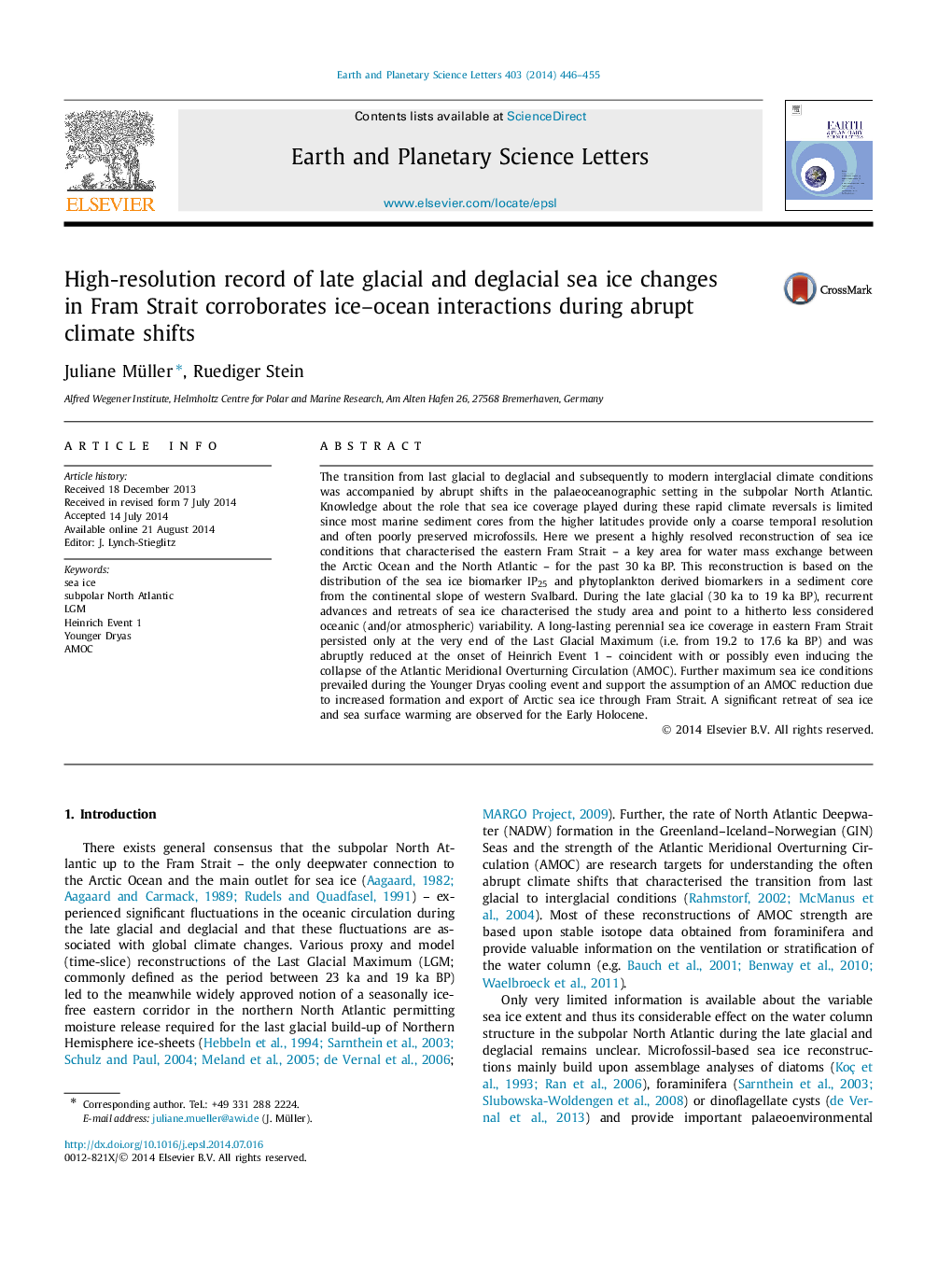| Article ID | Journal | Published Year | Pages | File Type |
|---|---|---|---|---|
| 6429163 | Earth and Planetary Science Letters | 2014 | 10 Pages |
•We reconstruct (de)glacial sea ice conditions in Fram Strait by means of biomarkers.•A highly variable sea ice cover characterised the study area during the late glacial.•Late glacial heat flow to the Nordic Seas was rather pulse-like than continuous.•A permanent sea ice cover preceded and finally added to the deglacial AMOC slowdown.•Arctic Ocean sea ice export caused another sea ice maximum during the Younger Dryas.
The transition from last glacial to deglacial and subsequently to modern interglacial climate conditions was accompanied by abrupt shifts in the palaeoceanographic setting in the subpolar North Atlantic. Knowledge about the role that sea ice coverage played during these rapid climate reversals is limited since most marine sediment cores from the higher latitudes provide only a coarse temporal resolution and often poorly preserved microfossils. Here we present a highly resolved reconstruction of sea ice conditions that characterised the eastern Fram Strait – a key area for water mass exchange between the Arctic Ocean and the North Atlantic – for the past 30 ka BP. This reconstruction is based on the distribution of the sea ice biomarker IP25 and phytoplankton derived biomarkers in a sediment core from the continental slope of western Svalbard. During the late glacial (30 ka to 19 ka BP), recurrent advances and retreats of sea ice characterised the study area and point to a hitherto less considered oceanic (and/or atmospheric) variability. A long-lasting perennial sea ice coverage in eastern Fram Strait persisted only at the very end of the Last Glacial Maximum (i.e. from 19.2 to 17.6 ka BP) and was abruptly reduced at the onset of Heinrich Event 1 – coincident with or possibly even inducing the collapse of the Atlantic Meridional Overturning Circulation (AMOC). Further maximum sea ice conditions prevailed during the Younger Dryas cooling event and support the assumption of an AMOC reduction due to increased formation and export of Arctic sea ice through Fram Strait. A significant retreat of sea ice and sea surface warming are observed for the Early Holocene.
